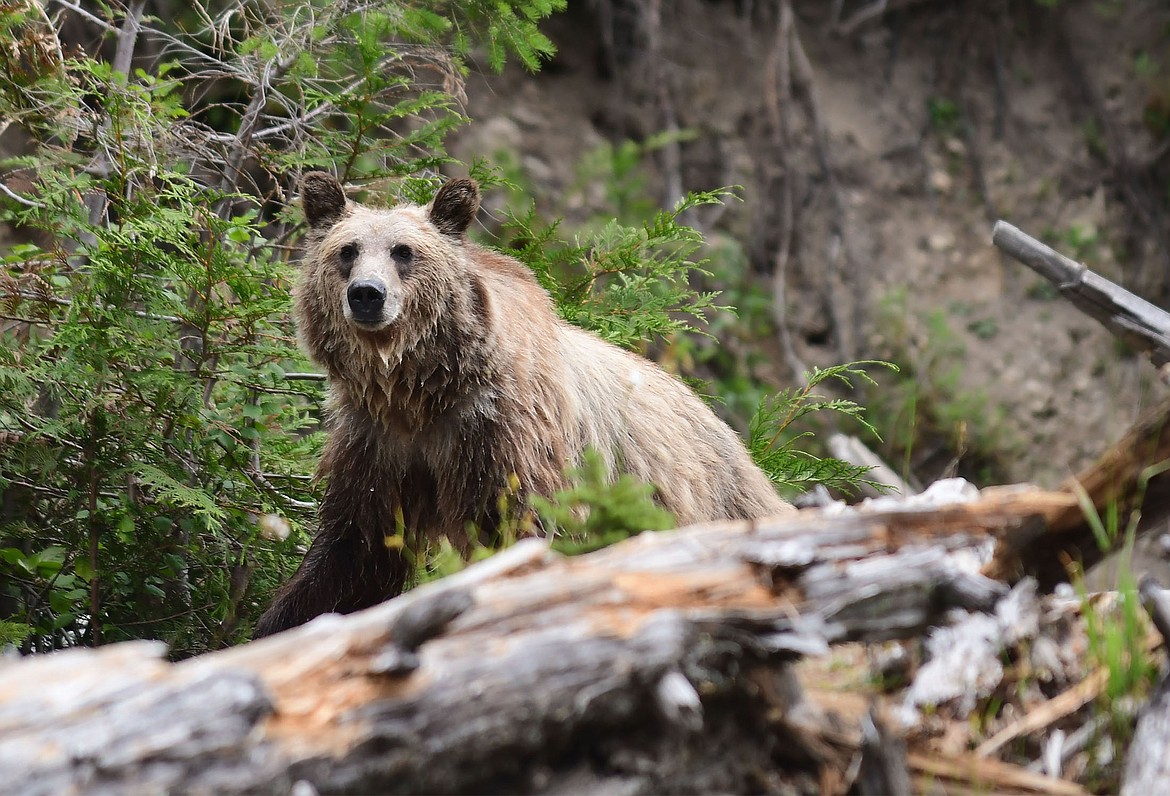Feds will examine grizzly delisting, again
The U.S. Fish and Wildlife Service announced last week that it will consider removing the grizzly bear from the Endangered Species list both in the Northern Continental Divide Ecosystem, and the Greater Yellowstone Ecosystem.
Wyoming petitioned the Service to delist grizzlies in Yellowstone and Gov. Greg Gianforte’s administration petitioned the Service in 2021 for the NCDE.
“The Service finds two of these petitions present substantial information indicating the grizzly bear in the Northern Continental Divide Ecosystem (NCDE) and the Greater Yellowstone Ecosystem (GYE) may qualify as their own distinct population segment and may warrant removal from the list of endangered and threatened wildlife,” the Service said in a release.
It will now take a closer look the overall bear population and recovery.
That process takes about 12 months.
If bears are delisted, grizzlies could be hunted again — something that hasn’t happened since the early 1990s.
The NCDE has about 1,000 grizzlies, including those that live in Glacier National Park, where hunting is illegal.
Even without hunting, plenty of bears were killed last year due to humans and other means. All told 45 were killed in the NCDE. Ten were hit by cars, three by trains, and one accidentally poisoned. Management agencies killed 28 bears — 12 for killing livestock, 11 for habituation near humans and getting into things like garbage and five died of injury and disease. Three died after getting bird flu, probably after eating infected birds. The others died from human self defense, poaching and one couldn’t be determined.
Two died of natural causes.
Gianforte last week welcomed the news about the potential for delisting.
“After decades of work, the grizzly bear has more than recovered in the NCDE, which represents a conservation success,”
he said. “As part of that conservation success, the federal government has accepted our petition to delist the grizzly in the NCDE, opening the door to state management of this iconic American species.”
The Fish and Wildlife Service rejected Idaho’s petition, where there aren’t nearly as many bears.
“Idaho’s proposal to delist all grizzlies in the lower 48 was laughable,” said Erik Molvar, a wildlife biologist and executive director for Western Watersheds Project.
“We’re happy to hear that the Fish and Wildlife Service hasn’t slipped so far from reality as Idaho’s politicians.” “However, we’re disappointed to hear that the Service will consider delisting the Northern Continental Divide and Greater Yellowstone grizzlies to appease the states of Montana and Wyoming,” Molvar continued. “These grizzly populations are still genetically isolated from each other and some half-baked plan to ship Northern Continental Divide grizzlies to the Greater Yellowstone Ecosystem does not overcome the distinct lack of state support for a sustainably connected grizzly bear population.”
Previous attempts to delist grizzlies haven’t passed muster in federal court, where the courts have ruled that without genetic connectivity between the Yellowstone and NCDE populations, the bears shouldn’t be delisted.
If the Service were to delist the GYE and NCDE bear populations, the agency would need to also find that bears in the two areas amount to “distinct population segments”–isolated populations that, like a species or subspecies, can receive their own ESA protections. But Service has identified the lack of connection between Western grizzly populations (and the resulting consequences on the species’ genetic health) as a stressor affecting all listed bears in the lower-48, Molvar claimed.


